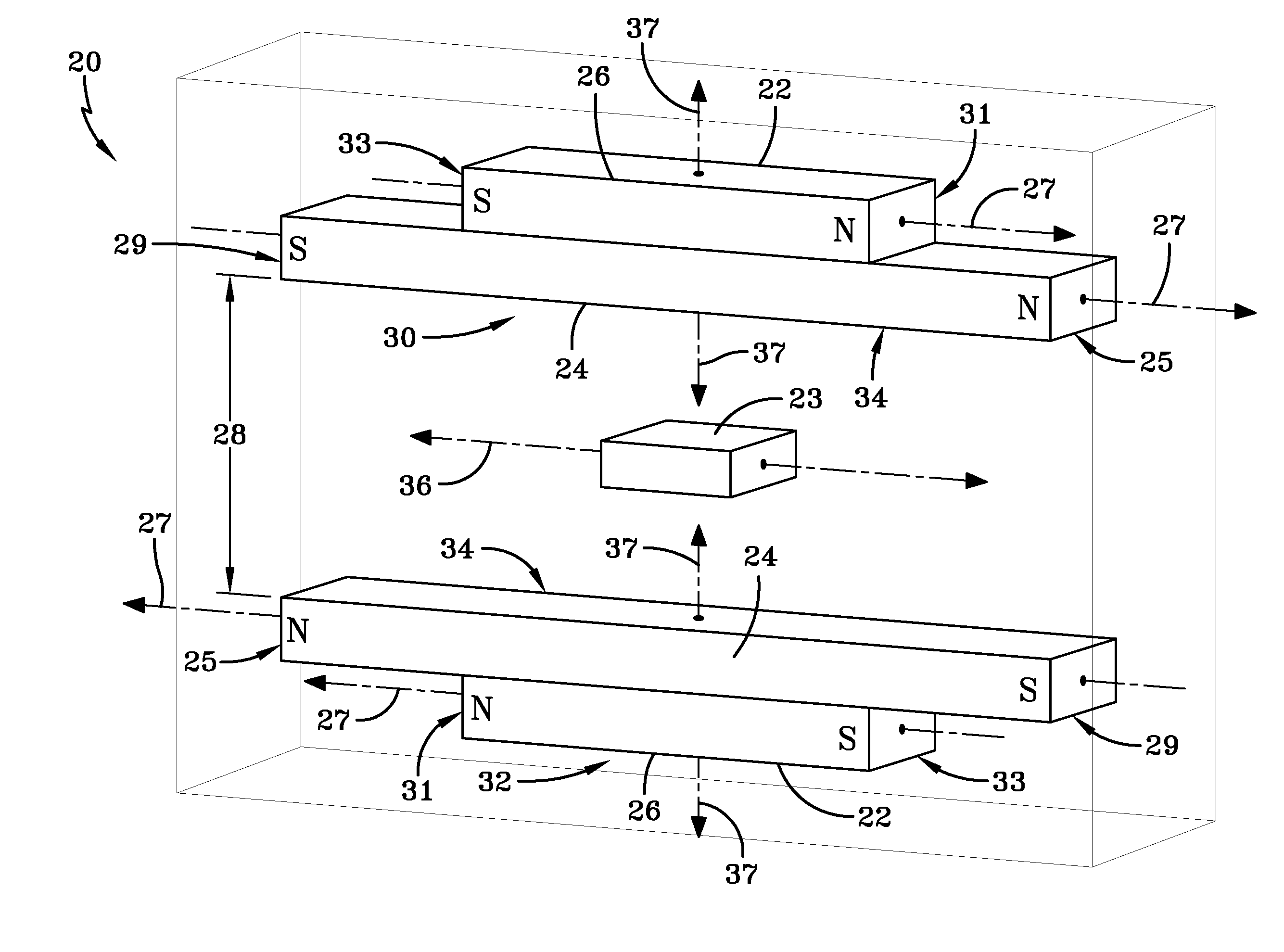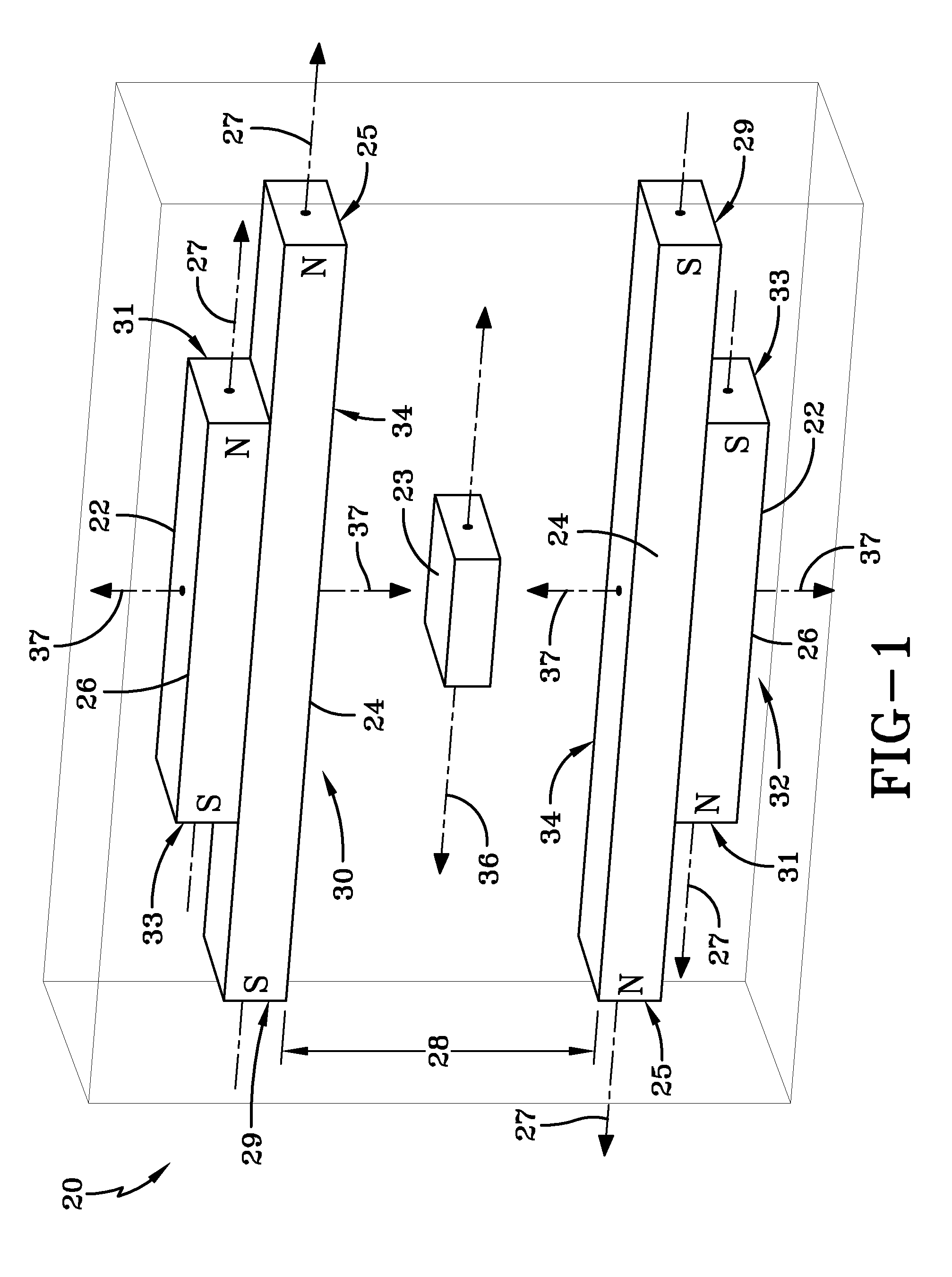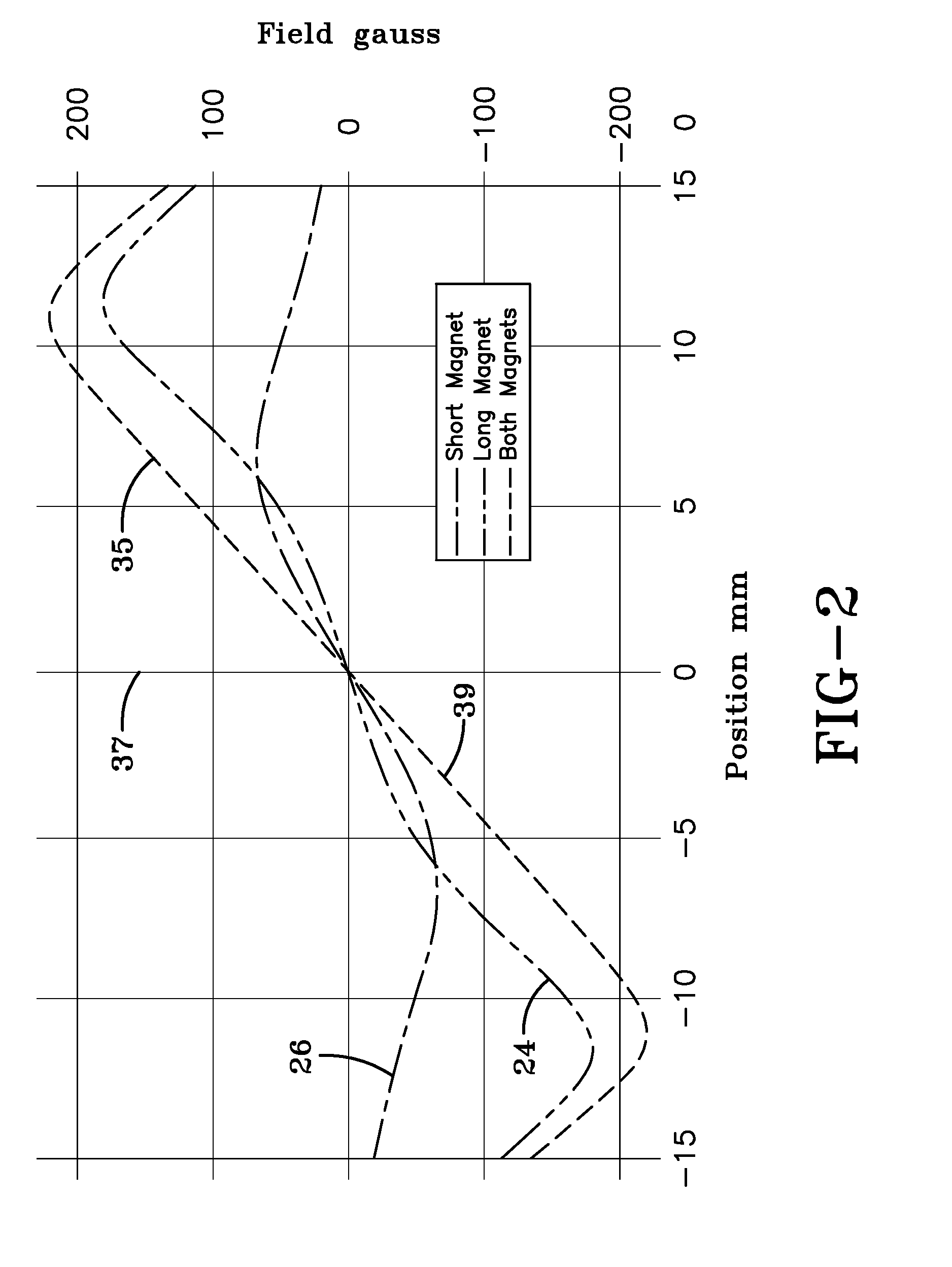Temperature tolerant magnetic linear displacement sensor
a technology of magnetic linear displacement and temperature tolerance, applied in the direction of galvano-magnetic hall-effect devices, magnetic field measurement using permanent magnets, instruments, etc., can solve the problems of increasing the cost of alignment of fibers, increasing the complexity, and increasing the cost of the alignment, so as to reduce the sensitivity and linear change in the magnetic field
- Summary
- Abstract
- Description
- Claims
- Application Information
AI Technical Summary
Benefits of technology
Problems solved by technology
Method used
Image
Examples
Embodiment Construction
[0017]Referring more particularly to FIGS. 1-3, wherein like numbers refer to similar parts, a magnetic linear position sensor 20 is shown in FIG. 1. The sensor 20 is constructed from two pairs 22 of opposed magnets, and a magnetic field sensor 23. Each magnet pair 22 is a stack formed from a long magnet 24 approximately 23 mm long and a short magnet 26 approximately 12.2 mm long and centered on the long magnet. As shown in FIG. 1, the long magnets 24 face each other to define a gap 28 which is between the magnetic pairs 22. Each long magnet 24 and each short magnet 26 is a simple bar magnet having one north pole N and one south pole S. Each long magnet 24 extends between a north end 25 and a south end 29. Similarly each short magnet 26 extends between a north end 31 and a south end 33. The upper pair of magnets 30 is arranged with the poles oriented S-N, and the lower pair of magnets 32 is arranged with the poles oriented N-S such that there is an attractive force between the magne...
PUM
 Login to View More
Login to View More Abstract
Description
Claims
Application Information
 Login to View More
Login to View More - R&D
- Intellectual Property
- Life Sciences
- Materials
- Tech Scout
- Unparalleled Data Quality
- Higher Quality Content
- 60% Fewer Hallucinations
Browse by: Latest US Patents, China's latest patents, Technical Efficacy Thesaurus, Application Domain, Technology Topic, Popular Technical Reports.
© 2025 PatSnap. All rights reserved.Legal|Privacy policy|Modern Slavery Act Transparency Statement|Sitemap|About US| Contact US: help@patsnap.com



